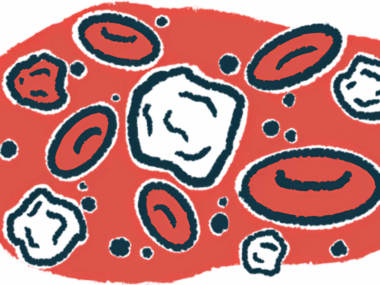Bacteria-fighting White Blood Cell ‘Traps’ Tied to T-cell Inflammation
Written by |

Molecular “traps” made by neutrophils, a type of white blood cell, to fight bacteria may contribute to the excessive inflammatory activity of T-helper 17 immune T-cells, which are known to play a role in autoimmune diseases like multiple sclerosis (MS).
Neutrophils are equipped with a number of biochemical tools to fight off bacterial invaders, one of which is called neutrophil extracellular traps (NETs).
A team of scientists in Australia and Germany have now demonstrated that NETs can help activate T-helper 17 (Th17) T-cells.
“This discovery is significant as it provides a novel therapeutic target to disrupt these harmful inflammatory responses. It opens the doors to the development of new therapies targeting this harmful NET-Th17 interaction, hopefully improving treatments for MS and other autoimmune conditions in the future,” Alicia Wilson, PhD, at the Johannes Gutenberg-University Mainz in Germany, said in a press release.
Wilson and other scientists published the results in Nature Communications, in the study, “Neutrophil extracellular traps and their histones promote Th17 cell differentiation directly via TLR2.”
NETS, as the acronym for neutrophil extracellular traps implies, are web-like structures made out of DNA and proteins that a neutrophil will spew out in response to an infectious threat. NETs function like a molecular spiderweb, ensnaring bacteria and making it easier for neutrophils and other immune cells to destroy them.
Higher than usual numbers of NETs have been described in autoimmune diseases such as MS, where the immune system accidentally attacks healthy tissue. But it hasn’t been clear if NETs are involved in driving the abnormal inflammatory response, or are just a byproduct of increased inflammation.
T-cells are a broad category of immune cell with many subsets, each with specific functions. Th17 cells are a particularly pro-inflammatory class of T-cells, and abnormal activity of these cells has been implicated in MS.
The researchers showed that, in the presence of NETs, T-cells are triggered to take on more strongly Th17 characteristics. For example, cells activated in the presence of NETs produce higher levels of IL-17, a signaling molecule that is a hallmark of Th17 T-cell activity.
“We found that the NETs cause Th17 cells to become more powerful, which enhances their detrimental effects [in autoimmune disease],” said Anne Bruestle, a study author with the department of immunology and infectious disease at Australian National University (ANU).
“This provides, for the first time, a mechanism to explain the long-standing finding that increased NETs are linked with T cell autoimmunity,” the researchers wrote.
The team showed that this Th17-activating feature of NETs depended on proteins called histones. These proteins are best known for providing structure to DNA inside a cell’s nucleus — the DNA gets “wrapped” around histones sort of like thread around a spool — but they are also the most abundant component of NETs.
In initial cell experiments, the researchers showed that blocking histones in the DNA in NETs prevented Th17 cells from being activated by the NETs. Further experiments with human cells showed that adding histones promoted Th17 T-cell growth and activity.
“These data cumulatively indicate, not only an induction of cytokines [inflammatory signaling molecules], but an additional increase in Th17 cell numbers in response to histones,” the researchers wrote.
These findings were then replicated in mouse models, and demonstrated that histones in NETs activated Th17 cells via a cellular receptor protein called TLR2, which may also be amenable to inhibition.
“Our data show a putative feed-forward loop between NETs/histones and Th17 cells and gives an explanation of the abundance of NETs and Th17 cells in” autoimmune diseases, the scientists concluded. “Thus, interrupting this feed-forward loop using a direct histone inhibitor … or through targeting of TLR2 provides a new potential therapeutic target for the treatment of these conditions.”
The researchers noted that the compound they used to block histones in their experiments — beta-methyl-cellobioside sulfate (mCBS) — is currently in early clinical trials as a potential therapy for sepsis and COVID-19, both conditions where out-of-control inflammation can cause serious problems.
“Because we see in both mice and humans that a group of proteins in NETs called histones can activate Th17 cells and cause them to become harmful, it makes sense that our histone-neutralizing drug, mCBS, which was developed to treat sepsis, may also be able to inhibit the undesirable effects of NETs which are linked to driving MS,” said Christopher Parish, a professor emeritus in the College of Health & Medicine at ANU and study author.





